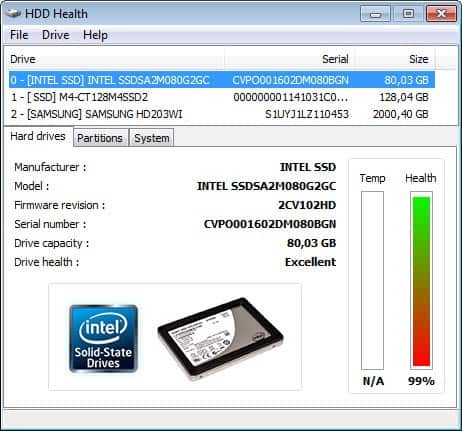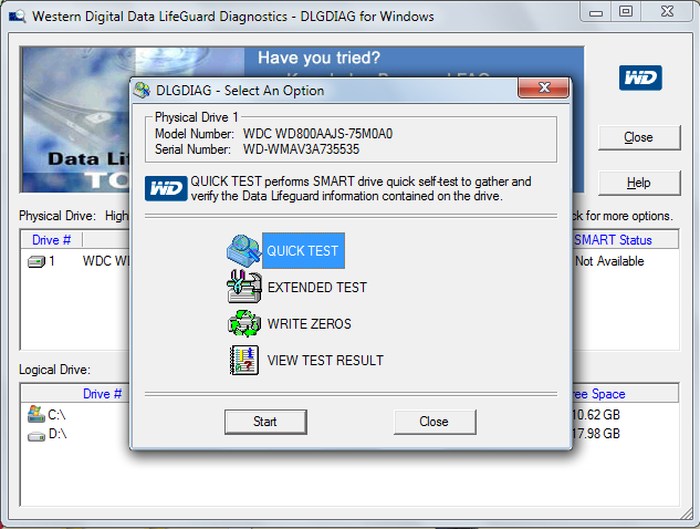

It's very light on resources although the fact that it is continually working on your hard drive means that occasionally you might expect some slow down of your PC's operations. How to check the health of a hard drive Ask Question Asked 12 years, 10 months ago Modified 5 months ago Viewed 512k times 157 My SATA drive started clicking and I was unable to access the data. The program issues alerts in the manner of your choosing - which basically means via email, pop-up messages (which can get rather annoying), net messages or event logging. The program utilises Self Monitoring and Reporting Technology (S.M.A.R.T.) however and unless your hard drive supports this (which most modern ones do) this program won't be of much use to you. Most recent hard drives (SATA/USB/FireWire/PCIe M. It continually performs minor diagnostic tests to see if anything irregular is happening. A hard drive that supports SMART, plus compatible drivers. The tool also permits you to start and monitor self tests of the drive.
#SATA DISK HEALTH CHECK WINDOWS 10#
The program sits in your system tray and monitors the performance of your hard drive at regular intervals. Using LED Setting feature, you can check LED effect previously before applying changed. 0:00 / 2:17 How to Check SSD Health in Windows 10 TechJunkie 137K subscribers Subscribe 116K views 1 year ago With fewer moving parts, SSD's are much lighter, use less power, and are generally. 13 Answers Sorted by: 150 sudo smartctl -a /dev/sda less This will give you an abundance of information about your hard drive's health. The program continually monitors your PC for tell tale signs that your hard drive is about to die due to corruption or plain and simple burn out.

Just type 'cmd' into the search bar and open the application. Here, I have listed 5 tools to check hard disk health. status of your drives from the Command Prompt. There are many free hard drive testing programs available to help you check the hard disk health. uses attributes which describe some particular aspect of an SSD’s condition. is a standard interface protocol that allows an SSD to check its status and report it to a host system. If you don't perform regular backups then I'd say it was essential that you use a tool like HDD Health. In Windows, you can manually check the S.M.A.R.T. To gather endurance information and life remaining on your SSD, we must rely on S.M.A.R.T. Advanced warning of impending hardware doom could one day save you tearing your hair out at losing all your important data.


 0 kommentar(er)
0 kommentar(er)
